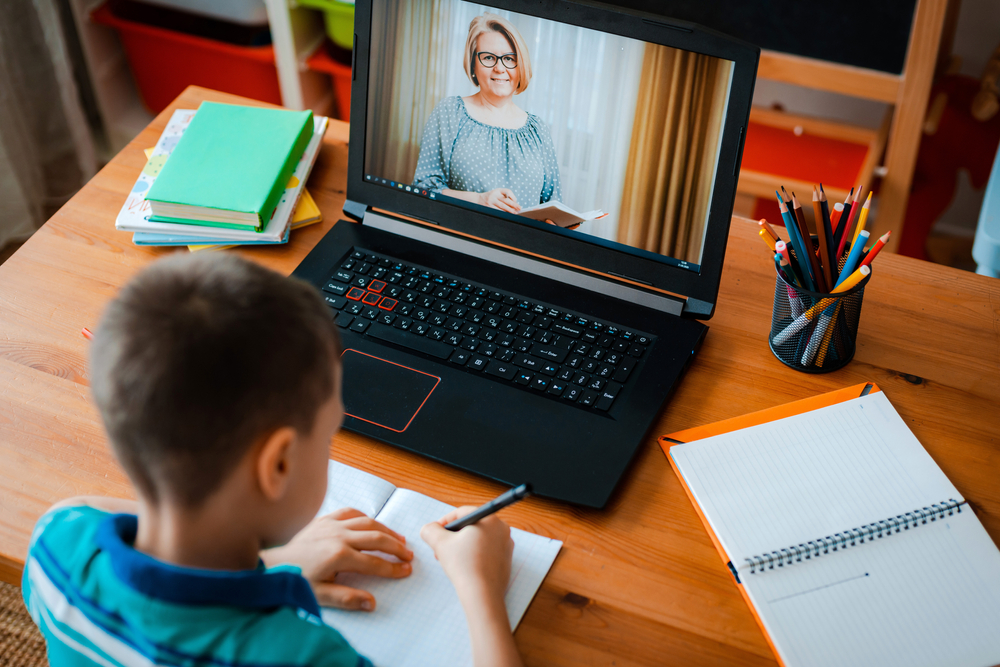10 Tips for Successful K-12 Remote Learning
Even with the widespread usage of remote learning across the U.S. school districts, there’s still a learning curve on K-12 remote learning for educators and administrators.
Like traditional classroom instruction, remote learning relies on several factors to succeed. Clarity of presentation, ability to review and check student comprehension, and timely feedback all contribute to quality instruction. A successful model for remote learning should incorporate these elements. It should also be sustainable over the long haul.
Challenges of Remote Instruction
The transition to remote learning has not been easy. The change to distance learning exposed vastly different levels of preparedness across U.S. school districts. Remote learning only intensified the inequities that already existed in K-12 education. While some schools simply mailed paper materials to students; others offered free online access, devices, and high-quality remote instruction. Recent research highlights the obvious: students who struggled in a face-to-face setting are more likely to struggle in the online environment as well.
Remote learning comes with its own unique set of challenges. For instance, it’s much harder to monitor student participation. According to The New York Times, some teachers reported that fewer than half of their students regularly participated in remote learning. This issue is more pronounced in low-income families who lack online access.
Another challenge of distance learning is keeping both the students and the educators safe online. The quick transition to online learning left users and networks vulnerable. Some districts employed tech tools that hadn’t been thoroughly tested, including free tools and services with insufficient privacy controls, invasive user tracking, and even malware. Teachers who lacked school resources resorted to using whatever devices they had at home. These devices weren’t necessarily protected and could have introduced risks to school networks that weren’t using VPN encryption or firewalls.
Hijacking home routers introduced malware, and Zoombombing (now a word) became so disruptive that some school districts, including the New York City Department of Education, banned the use of Zoom. Instead, they opted for video conferencing platforms like Google Meet (turns out, districts can also work around Zoombombing by adjusting Zoom’s security settings).

Given the challenges of remote learning and the ever-changing landscape of pandemic-response policy, schools need a set of practices to help them successfully navigate remote learning. Regardless of whether schools implement fully online or hybrid models this fall, these tips can help them succeed.
- Motivate students to participate.
You can’t teach them if they don’t show up, right? For many students, switching to remote learning was confusing. Teachers who clearly communicate expectations (when and where students need to show up, what assignments are and when they need to be completed) help students stay motivated.
- Train end users in cybersecurity.
End users include both students and teachers, and both are vulnerable to cyberattacks. Training end users to recognize and avoid scams, suspicious websites, and phishing attempts can help strengthen the schools’ cybersecurity.
- Think before posting.
It’s crucial that both teachers and students proceed with caution when posting anything online, including student photos. Posts might violate FERPA and lead to cyberbullying and other forms of harassment.
- Take student needs and obstacles into consideration.
Every student’s household is likely to grapple with its own set of challenges (parents working, family members contracting the virus, no online access). Teachers who evaluate students’ ability to participate might also help motivate them. Are they anxious? Busy caring for family members? Do they live in a food-insecure home? Many teachers are required to keep virtual “office hours.” These hours might be a good time for a one-on-one check in to discuss how the school can help.
- Keep the technology simple.
It’s hard for teachers to remotely track students’ processes. Keeping to a routine, with a streamlined set of apps, docs, and platforms might keep the confusion at bay. Teachers can provide simple instructions on how to use the learning tools and online materials. They can also model the tools and give plenty of examples, especially when introducing new apps and material.
- Deliver information in small doses.
When introducing new material, breaking it up in small doses can help students learn and retain the material better. Young learners in particular benefit from this approach. Zoom fatigue is real, and student engagement across all ages drops with longer class sessions and longer videos. Reiterating points, reviewing new information often, and connecting it to the already-learned material can all increase engagement.
- Make it interactive in real-time.
Students who actively participate in online classes will understand and retain knowledge better. They are also less likely to get bored. Online morning meetings (just to say hi, or celebrate a birthday) and discussions can mimic their brick-and-mortar counterparts and foster engagement. Younger students especially benefit from synchronous learning — all students gathering online at the same time. Online “togetherness” fosters connections and allows for real-time Q & A and feedback (teachers can always mute disruptive participants).
- Make learning materials available on demand.
Having continuous, on-demand access to the instruction is a big plus of learning remotely. Recorded video lessons and other learning tools and make them available any time the students need them. Doing so allows students to catch up at their own pace (and look, mama, no notes!).
- Be present.
Upload a profile pic, be accessible during virtual office hours. Provide timely feedback, screen-share during interactive lessons, and use multimedia-like visuals for presentations. The more students see that teachers are really there, the more they will be drawn into the online classroom experience.
- Be flexible.
Remote instruction is an adjustment for everyone, and it’s still evolving. Many teachers report giving some leeway with deadlines and grades as technical difficulties inevitably arise. Students need time to develop their own routines as they too try to adapt in these unprecedented times.
CyberReef is committed to eliminating the digital divide.
CyberReef cares about the health of our local communities. We are offering free Children’s Internet Protection Act (CIPA) filtering to impacted school districts for six months. The sign-up deadline is September 30, 2020. Please visit our Free CIPA Offer page for more details.
CyberReef’s Kids Internet Defense Shield (KIDS), which is CIPA-compliant, can be applied to any existing carrier and doesn’t require the installation of any devices or apps. KIDS is built on Private Network (PN), making data more secure off the public domain.
For more information on how you can make remote learning for your organization more secure, contact sales@cyberreef.com or call (318) 497-7230.

